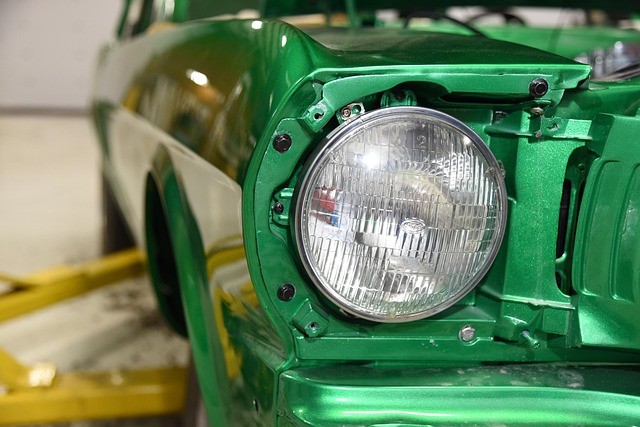Apron Assembly Repair: Optimizing Time Frames Through Efficient Strategies
Apron assembly repair is a critical, specialized process in auto body shops, ensuring vehicle safety…….
Welcome to an in-depth exploration of a critical aspect of industrial maintenance and manufacturing: Apron Assembly Repair. This article aims to guide readers through the intricate world of repairing and maintaining aprons, essential components in various industries, from food processing to automotive manufacturing. By the end, you’ll understand why apron assembly repair is not just a task but a strategic practice that impacts efficiency, safety, and sustainability.
Definition: Apron assembly repair refers to the process of restoring and reinforcing aprons, which are protective garments or barriers worn by workers to safeguard against hazards in industrial settings. These aprons can vary from simple fabric pieces to complex, multi-layered protective gear.
Core Components:
Historical Context: Apron usage in industries dates back centuries, with early workers employing simple cloth covers to protect themselves from debris and hazards. Over time, these evolved into specialized aprons designed for specific tasks. The concept of apron assembly repair has been integral to maintaining worker safety and equipment longevity since the advent of industrial processes.
Significance: Regular apron repair is a vital component of occupational health and safety programs. It ensures workers have adequate protection, reduces the risk of injuries, and extends the lifespan of aprons, making it a cost-effective solution for businesses.
Apron assembly repair has a significant global reach, with varying practices and standards across different regions:
| Region | Approach & Trends | Notable Industries |
|---|---|---|
| North America | Stricter safety regulations drive the adoption of high-quality, durable aprons. Repair is seen as an essential component of sustainable manufacturing practices. | Automotive, food processing, healthcare |
| Europe | Emphasis on eco-friendly materials and innovative repair techniques to reduce waste. Online platforms offer expert advice and product sales for apron repairs. | Textile manufacturing, logistics, construction |
| Asia Pacific | Rapid industrialization leads to a high demand for affordable, mass-produced aprons with efficient repair capabilities. | Electronics assembly, agriculture, hospitality |
| Middle East & Africa | Focus on protective gear for harsh working conditions, leading to durable and resistant apron designs. Local artisans play a role in traditional repair methods. | Oil and gas, mining, hospitality |
The global apron assembly repair market is influenced by several economic factors:
Technological innovations have revolutionized apron assembly repair:
Regulatory bodies worldwide have implemented standards and guidelines for apron assembly repair to ensure worker safety:
Despite its benefits, apron assembly repair faces several challenges:
Proposed Solutions:
A large food processing facility implemented a comprehensive apron repair program. They invested in high-quality materials and provided on-site training to workers. The result was a significant reduction in workplace injuries, improved worker morale, and cost savings due to extended apron lifespan. This case highlights the impact of structured repair programs in industrial settings.
A German automotive manufacturer faced challenges with inconsistent apron repairs, leading to safety concerns. They introduced a standardized repair system, digitalized repair manuals, and implemented quality checks. The initiative improved overall gear maintenance, reduced downtime, and enhanced worker satisfaction, demonstrating the benefits of technology integration.
The future of apron assembly repair is promising, with several emerging trends shaping its course:
Apron assembly repair is more than just a maintenance task; it is a strategic practice that contributes to the overall safety, efficiency, and sustainability of industrial operations. As industries evolve, adopting innovative repair techniques and materials will be crucial in meeting regulatory standards while reducing costs. By investing in apron repair programs, businesses can foster a culture of worker well-being, environmental stewardship, and continuous improvement.
Q: How often should aprons be repaired?
A: Apron repairs depend on the industry, task intensity, and material quality. Regular visual inspections are recommended, with minor repairs (e.g., sewing a tear) done as needed. Major overhauls may require periodic scheduling, typically every 6-12 months.
Q: Can apron repair be a DIY process?
A: Yes, basic repairs like hemming or patching can often be done by workers with minimal training. More complex tasks, especially involving specialized materials or technology, should be left to professionals.
Q: Are there environmental benefits to repairing aprons?
A: Absolutely! Apron repair reduces waste, minimizes the carbon footprint associated with new gear production, and promotes a circular economy approach to industrial practices.
Q: How can businesses stay updated on apron repair trends?
A: Industry publications, online forums, and professional associations provide valuable insights. Regularly reviewing safety regulations and attending industry conferences also keep businesses informed about the latest developments.

Apron assembly repair is a critical, specialized process in auto body shops, ensuring vehicle safety…….

Apron assembly repair is a meticulous and critical process for collision safety standards, involving…….

Apron assembly repair is a critical auto body work process that reconstructs the structural connecti…….

Apron assembly repair is a vital process for maintaining vehicle integrity and safety, involving the…….

Apron assembly repair is a critical auto body service, fixing or replacing this structural protector…….

Apron assembly repair is a critical process for auto collision centers, strengthening vehicle struct…….